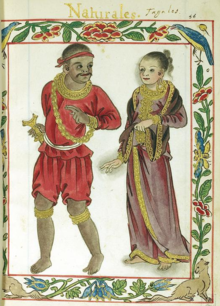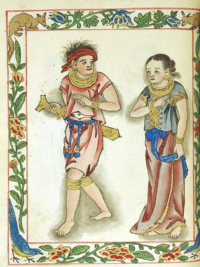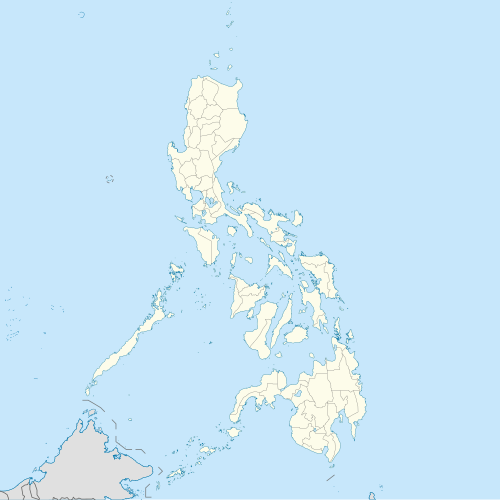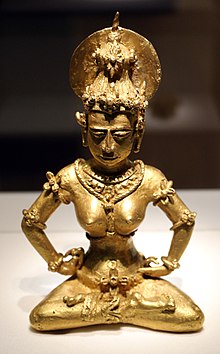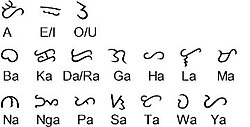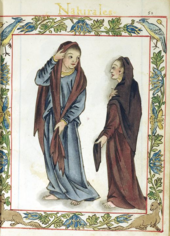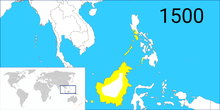
The history of the Philippines dates from the earliest hominin activity in the archipelago at least by 709,000 years ago. Homo luzonensis, a species of archaic humans, was present on the island of Luzon at least by 134,000 years ago.

The military history of the Philippines is characterized by wars between Philippine kingdoms and its neighbors in the precolonial era and then a period of struggle against colonial powers such as Spain and the United States, occupation by the Empire of Japan during World War II and participation in Asian conflicts post-World War II such as the Korean War and the Vietnam War. The Philippines has also battled a communist insurgency and a secessionist movement by Muslims in the southern portion of the country.
The Battle of Mactan was fought on a beach in Mactan Island between Spanish forces led by the Portuguese explorer Ferdinand Magellan along with local allies, and Lapulapu, the chieftain of the island, on the early morning hours of April 27, 1521. Magellan, a Portuguese-born commander serving the Spanish Empire who led an expedition that ultimately circumnavigated the world for the first time, commanded a small Spanish contingent in an effort to subdue Mactan under the Spanish crown. The sheer number of Lapulapu's forces, compounded with issues associated with the location and the armor, ultimately resulted in a disastrous defeat to the Europeans and the death of Magellan. Surviving members of Magellan's crew continued the expedition under the command of Juan Sebastian de Elcano, who completed the journey in September 1522.
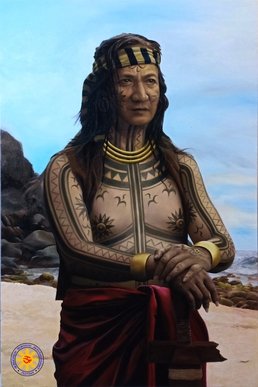
Lapulapu or Lapu-Lapu, whose name was first recorded as Çilapulapu, was a datu (chief) of Mactan, an island now part of the Philippines. Lapulapu is known for the 1521 Battle of Mactan, where he and his men defeated Spanish forces led by Portuguese explorer Ferdinand Magellan and his native allies Rajah Humabon and Datu Zula. Magellan's death in battle ended his voyage of circumnavigation and delayed the Spanish occupation of the islands by over forty years until the expedition of Miguel López de Legazpi which reached the archipelago in 1565.

Islam in the Philippines is the second largest religion in the country, and the faith was the first-recorded monotheistic religion in the Philippines. Historically, Islam reached the Philippine archipelago in the 14th century, through contact with Muslim Malay and Arab merchants along Southeast Asian trade networks, in addition to Yemeni missionaries from the tribe of Alawi of Yemen from the Persian Gulf, southern India, and their followers from several sultanates in the wider Malay Archipelago. The first missionaries then followed in the late 14th and early 15th centuries. They facilitated the formation of sultanates and conquests in mainland Mindanao and Sulu. Those who converted to Islam came to be known as the Moros, with Muslim conquest reaching as far as Tondo that was later supplanted by Bruneian Empire vassal-state of Maynila.

Datu is a title which denotes the rulers of numerous Indigenous peoples throughout the Philippine archipelago. The title is still used today, though not as much as early Philippine history. It is a cognate of datuk, dato, and ratu in several other Austronesian languages.

Tondo, erroneously referred to as the Kingdom of Tondo, was a Tagalog settlement which served as a major trade hub located on the northern part of the Pasig River delta on Luzon Island. Together with Maynila, the polity (bayan) that was also situated on the southern part of the Pasig River delta, Tondo had established a shared monopoly on the trade of Chinese goods throughout the rest of the Philippine archipelago, making it an established force in trade throughout Southeast Asia and East Asia.

Ache (c. 1500s - 1572; Old Spanish orthography: Rája Aché or Raxa Ache, also known as Rája Matandâ, was King of Luzon who ruled from the kingdom's capital Maynila now the capital of the Republic of the Philippines.

Maynila, also known commonly as Manila, was a major Islamic Tagalog bayan situated along the modern-day district of Intramuros in the city of Manila, at the southern bank of the Pasig River. It was considered to be one of the most cosmopolitan of the early historic settlements on the Philippine archipelago, fortified with a wooden palisade which was appropriate for the predominant battle tactics of its time. At the northern bank of the river lies the separately-led polity of Tondo.

Butuan, sometimes referred to as the Kingdom of Butuan, was a precolonial Bisaya Hindu polity (lungsod) centered around northeastern Mindanao island in present-day Butuan, Philippines. It was known for its gold mining, gold jewelry and other wares, and its extensive trade network across maritime Southeast Asia and elsewhere. Over its long history the lungsod had direct trading relationships with the ancient civilizations of China, Champa, Đại Việt, Pon-i (Brunei), Srivijaya, Majapahit, Kambuja, and even Persia as well as areas now comprised in Thailand.

In early Philippine history, barangay is the term historically used by scholars to describe the complex sociopolitical units that were the dominant organizational pattern among the various peoples of the Philippine archipelago in the period immediately before the arrival of European colonizers. Academics refer to these settlements using the technical term "polity", but they are usually simply called "barangays".

The 1570 Battle of Manila was fought in Manila between the local forces led by Rajah Sulayman and the Spaniards led by Field Marshal Martin de Goiti, on 24 May 1570. Goiti's forces eventually besieged the fort of Manila, destroyed Manila, and won the battle, with the site of the fort falling to the Kingdom of the Spains and the Indies. The Spaniards then founded a Spanish city of Manila making it the capital of the Spanish East Indies.
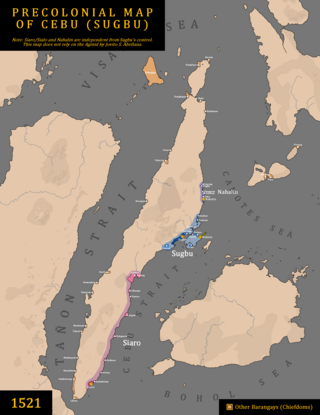
Cebu, also called Sugbu, informally referred to as the Rajahnate of Cebu, was an Indianized mandala (polity) monarchy on the island of Cebu in the Philippines prior to the arrival of the Spanish conquistadors. It is known in ancient Chinese records as the nation of Sokbu (束務) (Hokkien) or Suwu (Mandarin). According to Visayan oral legend, it was founded by Sri Lumay or Rajamuda Lumaya, a half-Malay and half-Tamil from Sumatra. The capital of Cebu was Singhapala which is Tamil-Sanskrit for "Lion City", the same root words with the modern city-state of Singapore.
Malay is spoken by a minority of Filipinos, particularly in the Palawan, Sulu Archipelago and parts of Mindanao, mostly in the form of trade and creole languages, such as Sabah Malay.

Malays played a significant role in pre-Hispanic Philippine history. Malay involvement in Philippine history goes back to the Classical Era with the establishment of Rajahnates as well as the Islamic era, in which various sultanates and Islamic states were formed in Mindanao, the Sulu Archipelago, and around Manila.
In the Philippine languages, a system of titles and honorifics was used extensively during the throughout its history. In the pre-colonial era, It was mostly used by the Tagalogs and Visayans. These were borrowed from the Malay system of honorifics obtained from the Moro peoples of Mindanao, which in turn was based on the Indianized Sanskrit honorifics system and the Chinese's used in areas like Ma-i (Mindoro) and Pangasinan. The titles of historical figures such as Rajah Sulayman, Lakandula and Dayang Kalangitan evidence Indian influence. Malay titles are still used by the royal houses of Sulu, Maguindanao, Maranao and Iranun on the southern Philippine island of Mindanao. In the Spanish colonial era, Philip II of Spain decreed that the nobility in the Philippine islands should retain their pre-hispanic honours and privileges. In the modern times, these are retained on a traditional basis as the 1987 Constitution explicitly reaffirms the abolition of royal and noble titles in the republic.

The term Paramount Ruler, or sometimes Paramount Datu, is a term used by historians to describe the highest ranking political authorities in the largest lowland polities or inter-polity alliance groups in early Philippine history, most notably those in Maynila, Tondo, Pangasinan, Cebu, Bohol, Butuan, Cotabato, and Sulu.

Singhapala was an ancient fortified city or a region, the capital of the Indianized kingdom of Cebu. The location of this ancient city is what is now the modern Barangay Mabolo in the northern district of Cebu City. It was founded by Sri Lumay or Raja Muda Lumaya, a half-Tamil and half-Malay from Sumatra.
